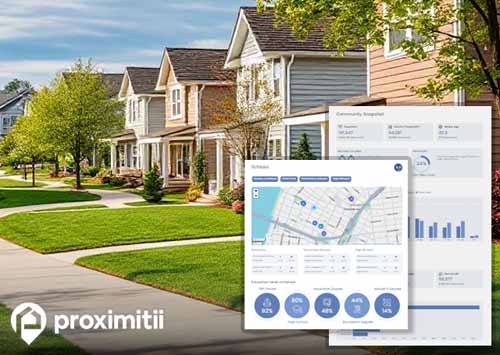| Statistic | Reportedincidents | /100k people | Livingston/100k people | Louisiana/100k people | National/100k people |
| Total crime | 0 | n/a (estimate) | 859 (estimate) | 2,816 | 2,119 |
| Murder | n/a | n/a | n/a | 10.8 | 5.0 |
| Rape | n/a | n/a | n/a | 33.7 | 37.5 |
| Robbery | n/a | n/a | n/a | 39.4 | 60.6 |
| Assault | n/a | n/a | n/a | 436.0 | 256.1 |
| Violent crime | n/a | n/a (estimate) | 159 (estimate) | 520 | 359 |
| Burglary | n/a | n/a | n/a | 405.4 | 229.2 |
| Theft | n/a | n/a | n/a | 1,636.2 | 1,272.1 |
| Vehicle theft | n/a | n/a | n/a | 254.8 | 258.8 |
| Property crime | n/a | n/a (estimate) | 701 (estimate) | 2,296 | 1,760 |


Crime can be categorized into two primary types: violent and property crimes. Violent crimes encompass offenses such as murder, rape, robbery, and assault, whereas property crimes involve acts like burglary, theft, and vehicle theft. The overall crime rate in Livingston is 35.9% lower than the national average. Specifically, there were 1 violent crimes reported in Livingston, equivalent to 51 per 100,000 residents, which is lower than the national average by 86.1%. Additionally, Livingston recorded 28 property crimes, amounting to 1439 per 100,000 people, lower than the national average by 26.4%.
With only 51 incidents per 100,000 people, Livingston boasts an exceptionally low rate of violent crimes, positioning it as one of the safest cities in the United States. Given these low violent crime rates, Livingston has become an appealing destination for individuals in search of a secure and welcoming place to establish their new home.
During the most recently reported crime year, Livingston experienced a total of 0 reported murders. This statistic paints it as a beacon of security when it comes to severe violent crimes. Such an achievement not only instills a profound sense of security for its residents but also sets a high standard for other communities striving to create similarly secure environments. It underscores the area as a place where safety is a top priority, enhancing its appeal as a desirable location to live and thrive.
Determining whether Livingston is a place to live may not always yield a simple answer, given the city's varying safety levels across different areas. Nonetheless, comprehending the city's overall crime rate can be a valuable asset. In broad terms, Livingston has an overall crime rate that is 36% lower than the national average. When we take a look at crime on a daily basis, this translates into 0.08 daily occurrences, comprising 0 violent crimes and 0.08 property crimes. Scrutinizing these statistics provides a foundation for a more informed assessment of the suitability of Livingston as a potential place to establish residency.
Livingston has a poverty rate of 9.7, while the national average is 15.1. In the past, there has been a direct correlation between high or low poverty rates and high or low crime stats. Elevated poverty levels and income disparities can contribute to heightened criminal activity, as individuals may resort to unlawful means to address their fundamental necessities. While lower poverty levels have led to a reduction in typical crime levels compared to other areas.
Highly populated regions typically encompass expansive urban hubs teeming with diverse economic prospects. Within these areas, income inequality can be exacerbated, giving rise to enclaves of poverty amid affluence. Communities marked by economic disparities may contend with heightened property crimes, and in certain instances, violent crimes. Conversely, regions characterized by low population density often exhibit lower Livingston crime rates. For instance, in Livingston, the population density stands at 583.3 people per square mile, diverging from the national average of 90.6 people per square mile.
In Livingston, 77.5% of residents have successfully graduated from high school, whereas the national average stands at 83%. The educational makeup of any city can exert a significant influence on crime rates. Typically, higher levels of educational attainment are associated with reduced crime rates, as they furnish individuals with improved employment prospects and viable alternatives to engaging in criminal activities. Conversely, communities characterized by lower educational achievement often grapple with higher crime rates, as limited opportunities may drive individuals towards criminal behavior.

Why stop at city-to-city? With Local Insights, you can compare neighborhoods, zip codes, or even exact addresses. Access 300+ hyperlocal data points—from schools and crime to housing and amenities—to see which area is the better fit.

| Item | Livingston | Louisiana | National |
| Law enforcement employees (officers & civilians) | n/a | 7,311 | 558,732 |
| Police officers & civilians /1000 residents | n/a | 4.2 | 3.3 |
| State | Total offenders | Louisiana /100K | National /100K |
| Louisiana | 12,948 | 286 | 266 |
| City | Population | Violent crime/100k people | Property crime/100k people | Total crime/100k people |
| Watson, LA | 1,225 | 104 | 460 | 565 |
| Killian, LA | 1,852 | 145 | 641 | 786 |
| Albany, LA | 1,300 | 181 | 798 | 979 |
| Prairieville, LA | 33,228 | 225 | 992 | 1,217 |
| Port Vincent, LA | 395 | 302 | 1,333 | 1,635 |
| Denham Springs, LA | 9,908 | 378 | 1,668 | 2,045 |
| French Settlement, LA | 960 | 400 | 1,765 | 2,164 |
| Livingston, LA | 1,880 | 159 | 701 | 859 |
| City | Population | Violent crime/100k people | Property crime/100k people | Total crime/100k people |
| Cameron, WI | 1,880 | 117 | 485 | 601 |
| Buffalo, TX | 1,880 | 106 | 2,122 | 2,228 |
| Hanson, MA | 1,880 | 121 | 204 | 325 |
| Eagleview, PA | 1,880 | 35 | 201 | 236 |
| Ellaville, GA | 1,880 | 197 | 1,311 | 1,507 |
| Livingston, LA | 1,880 | 159 | 701 | 859 |